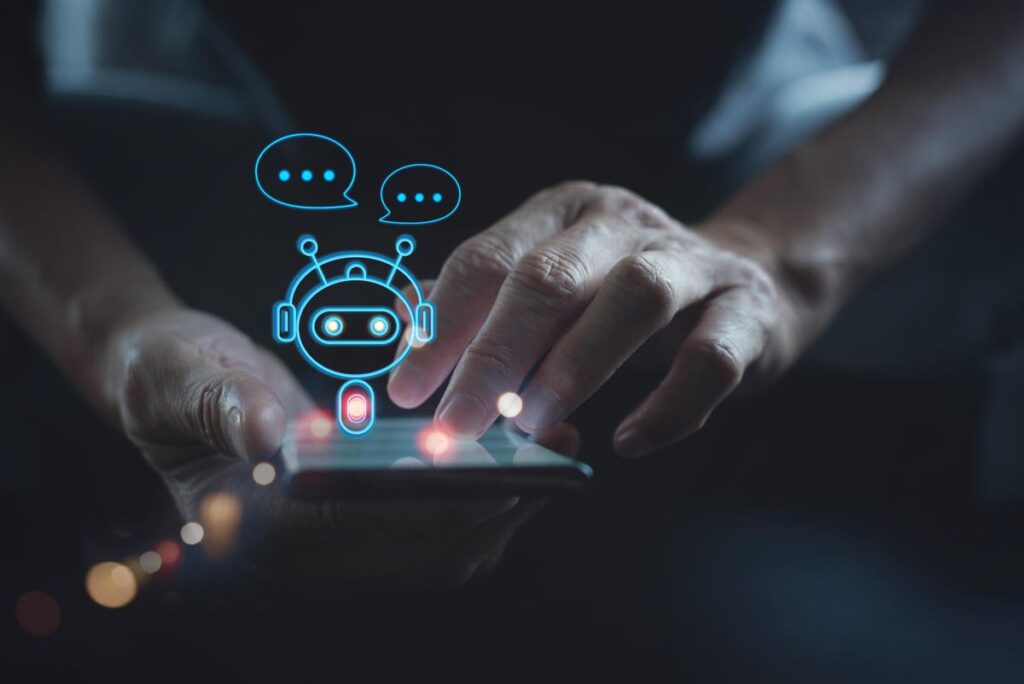The IRS has announced the availability of expanded chatbot technology on the official IRS website to help answer basic questions for people receiving notices.
The announcement alone is pretty exciting for taxpayers and tax professionals who have found themselves sitting on speaker phone for what feels like an interminable wait to talk to an IRS representative—assuming, of course, that it works. I’m happy to report that it sure feels like it does.
Background
First, a little background. For years, the IRS has been behind—way behind—when it comes to the use of technology. The outdated tech is a running joke among most tax professionals who maintain a fax machine or fax service solely to communicate with the agency since IRS representatives do not typically use email.
Lately, however, the IRS has been investing more heavily in technology, largely as a result of the Inflation Reduction Act, which included approximately $80 billion in additional funding for the IRS. The funding was not a lump sum—it is over ten years—though it was scaled back as part of the debt ceiling agreement earlier in the year.
IRS Commissioner Danny Werfel has said that using IRA funding has made “an immediate, meaningful difference” in how the agency does business. Improving the taxpayer experience has been a key goal of Werfel since his tenure began earlier this year. At his confirmation hearing, he repeated the theme that the agency should be providing “world-class customer service.”
Noticeable tech changes made so far by the agency include a new callback feature for taxpayers, the ability to upload responses to some notices, and a promise to go mostly paperless beginning next year.
Chatbots
The IRS has been rolling out new voice bots and chatbots to help taxpayers, including obtaining account transcripts and getting answers to questions about balances due. Voice bots can understand and produce language—basically, voice menus that allow you to communicate and ask questions. Chatbots do the same thing with written text (think of the pop-up chat features you’ve seen on private sector websites).
Earlier this year, the IRS announced that it had nine taxpayer-facing voice bots in operation and ten chatbots. According to the IRS, since January 2022, IRS voice and chatbots, in English and Spanish, assisted more than 13 million taxpayers resolve their tax issues, including setting up roughly $151 million in payment agreements.
The new chatbot feature will assist taxpayers who receive notices CP2000, CP2501 and CP3219A. These mailings inform taxpayers if the tax information the IRS received from third parties doesn’t match the information they provided themselves to the IRS.
Werfel explained, “We understand receiving a notice from the IRS can be concerning, and people frequently have questions. The use of chatbots in call centers has emerged as an effective practice in both the private and public sectors, making it easier for people to quickly get basic information to resolve their issues and avoid wait times on the phone. Deploying chatbots at the IRS call center helps taxpayers get their issues resolved quicker, and it helps free up valuable phone resources for other taxpayers with questions on more complex issues.”
The chatbot simulates human interaction with taxpayers through a web or mobile app on a computer or mobile screen, using artificial intelligence, or AI-powered software to respond to natural language. The first chatbot used by the IRS collection division went into service in December 2021 as an add-on, since taxpayers still had the option of trying to reach a real person by phone.
In the latest version, whenever you make an inquiry about certain notices, a pop-up appears that you can activate by clicking the button. Here’s what it looks like on my screen:
When you click the button, a dialogue box pops up. It provides automated text to find out what sort of information you need. Here’s what it looks like on my screen:
I chose “I need more time to respond.” It walked me through some basic information about next steps by asking me where I was in the notice process—for example, whether the due date had passed. Toward the end of the “conversation,” I was offered the ability to chat with an IRS representative. Here’s what that looked like on my screen:
An IRS representative did enter the chat, and introduced himself by name and ID number. The representative then asked how he could help. From start to finish, it tough about two minutes (yes, really).
According to the bot, agents are generally available from 8 a.m. to 10 p.m. Eastern Time, Monday through Friday, except for federal holidays. Those hours are al little longer than those for phone representatives. Normal IRS phone help lines are open Monday through Friday, 7 a.m. to 7 p.m. local time.
The IRS says that it plans to continue additional bot technology features in the future to assist taxpayers with more complex issues.
Read the full article here













